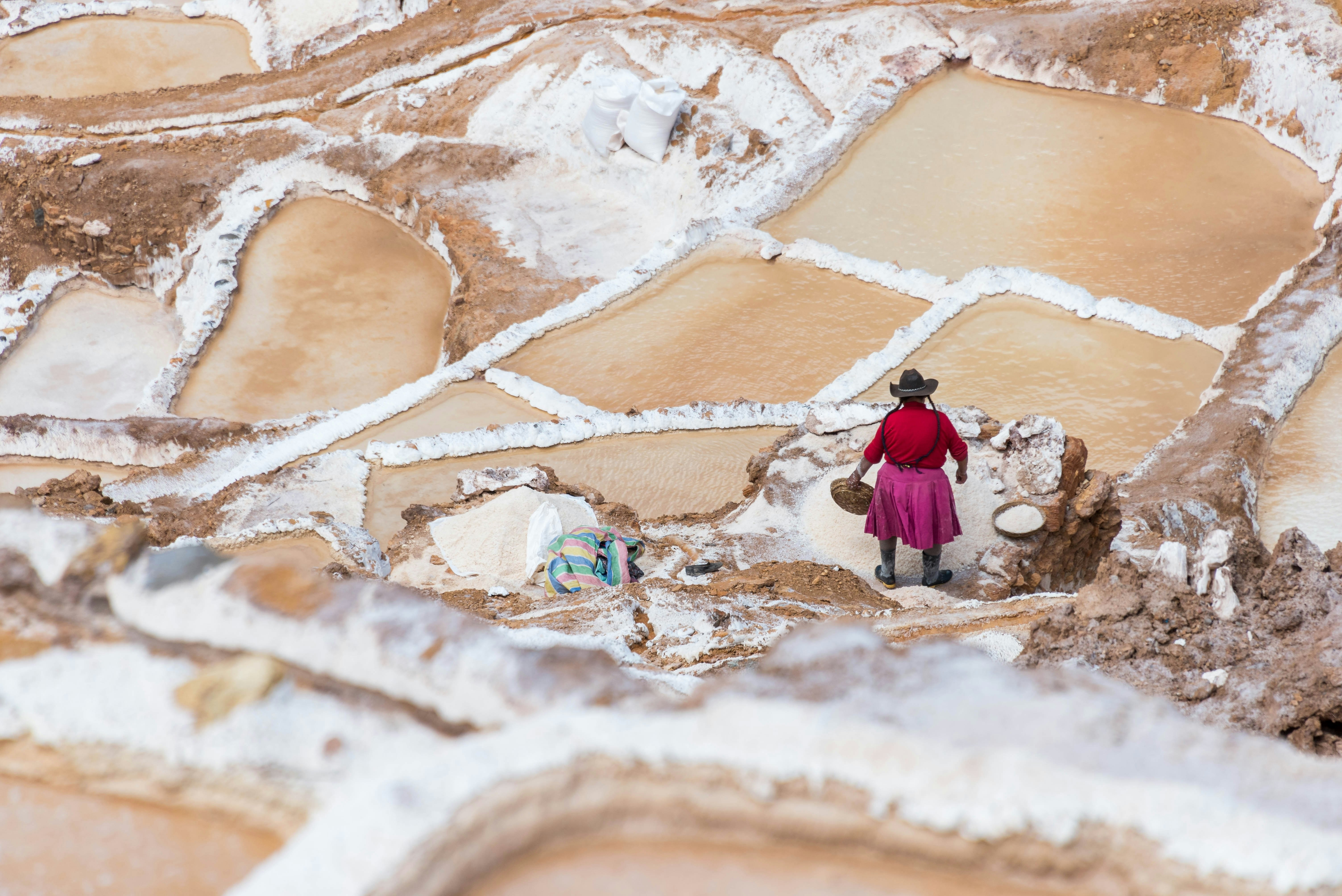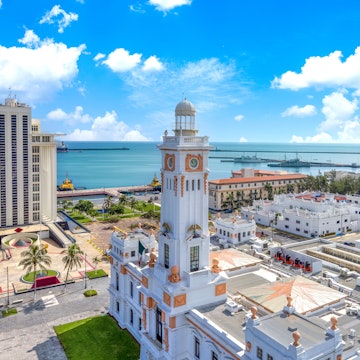
Follow the sun: exploring ancient Incan history in southern Peru
Sponsored by

Sep 1, 2023 • 7 min read

The mystical and high-altitude settings of Southern Peru were once strategically chosen to be the heart of the Inca Empire © Jerome Stubbs / Shutterstock
Cusco might be just a short flight south from Peru’s capital of Lima, but you’ll feel as if you traveled centuries back in time.
Filled with lush hills, fertile soil and spotless views of the Milky Way, this mystical and high-altitude setting was once strategically chosen to be the heart of the Inca Empire. Impressively, examples of the impeccable stone architecture from the 15th and 16th-century remain standing – elusive fortresses, imposing temples honoring natural elements, and steep agricultural terraces that snake across hillsides.
In the absence of a written language, the history of the Incas is shrouded in mystery, so the best way to get in touch with the ancient Peruvian powerhouse is by literally following in their footsteps. Tie on your hiking boots and follow along on a week-long exploration of southern Peru’s sacred Cusco region.
Editor’s note: This itinerary covers high-altitude areas of Peru. If possible, before you start this itinerary, it is advisable to spend time in lower altitude parts of the region and acclimatize before exploring the higher elevations in Cusco.

Day 1: Cusco City
The centrality of Cusco city to the Inca is right there in its name – it means ‘navel of the world’ in the ancient indigenous Quechua language. Other cultural touchstones remain as well, including the annual Inti Raymi celebration, which honors the Sun God at the winter solstice in June. The parade’s route – Qoricancha, Plaza de Armas and, ultimately, Sacsayhuaman – is the perfect layout for a full day in Cusco, no matter what time of year.
Built in honor of the Sun God, Inti, the 15th-century Qoricancha once dripped in gold, from its walls down to its floors and beyond to the sprawling garden. Considered the most important Inca temple, the Spaniards dismantled Temple of the Sun, turning what was left into the foundation of the Santo Domingo church. Today you can still tour the temple, just south of the Cusco’s main square, for a visual display of the interconnection of Western religion and indigenous culture.

Next, head to the imperial city’s Plaza de Armas, once a great meeting center for the Inca. The present-day main square features a lovely fountain, bountiful flower beds and benches where locals and travelers sit side-by-side. Surrounded by colonial architecture housing shops and restaurants, the Plaza de Armas continues to be center stage for religious and cultural celebrations.
If you’re going to visit one Incan historic site while in Cusco city, make it Sacsayhuaman. Tucked behind the trendy San Blas neighborhood at a steep altitude of 3,700m, the archaeological site is believed to have been a fortress or ceremonial center (or perhaps both). A 15-minute walk from the main square, Saqsayhuaman is an extensive complex that includes plazas, altars, towers, caves, and a stunning view of the city below.

Day 2: The Sacred Valley
On your second day, leave the city behind and enter the mystic countryside known as Valle Sagrado (Sacred Valley). The best route is to pass through Pisac, a tiny town that fully embraces new-age hippie culture. After sipping on a ceremonial cacao from a local cafe, stroll to the main square where you’ll find a trailhead to Pisac’s towering set of Inca terraces. Likely serving as a defense point protecting Cusco city, these are some of the most intact Inca ruins in the valley and are well worth the steep, two-hour climb.
With an active morning behind you, continue west on the singular road that connects the entire valley. As the altitude begins to drop, you may want to stop by pleasant roadside villages such as Yucay, where bulls continue to plow crop fields, or the biggest town in the area, Urubamba. Some 36 miles later, when the paved road turns to cobblestone, you’ll know you’ve reached your next destination, Ollantaytambo.

Day 3: Ollantaytambo
Too many travelers make the mistake of merely passing through Ollantaytambo on their way to catch the train to Machupicchu. Walk the cobblestone pedestrian streets accompanied by the constant burble of water rushing down the open canals until you find a morning breakfast cart serving a typical hot quinoa drink and bread with avocado. Once you’ve eaten, hike up the Ollantaytambo archaeological site to take in the view from this Inca-era outpost and transit point between Cusco and Machupicchu.
Spend a few hours exploring all that the many-terraced sites of Ollantaytambo have to offer – including the meticulously built Temple of the Sun and the Bath of the Ñusta (Inca princess). Then it’s time to see what modern day Ollantaytambo has to offer. Make your own spirit inspired by Andean botanicals at Distileria Andina, take a spin through Alqa Museum and Cafe and end at any of the many restaurants with fantastic views of the ancient historic sites and surrounding mountains.

Days 4 and 5: 2-Day Inca Trail
After a few days relishing the unique blend of contemporary life set in the ancient backdrop of Cusco and the Sacred Valley, it’s time to immerse yourself in nature. While the classic 4-Day Inca Trail will of course bring you face-to-face with more Inca archaeological sites, the 2-day option is an incredible hike to Machupicchu, in the midst of a tropical mountain forest.
Having passed by waterfalls and walked through historic sites such as Wiñay Wayna (meaning ‘Forever Young’ in Quechua), hikers will inch their way up the staircase of Inti Punku, or Sun Gate, for an impressive first glimpse of Machupicchu (2,430m). The sensation of having walked an authentic Inca path to reach the 15th-century citadel makes the visit even more memorable and rewarding.

After a well-earned night’s sleep, return to Machupicchu the following day for the full guided tour of the world-famous site. This awe-inspiring ancient city was never revealed to the Spanish and was virtually forgotten until the early part of the 20th century. In fact, the true purpose of Machupicchu remains sketchy. It might have been founded in the waning years of the last Incas, or it might have already become an uninhabited, forgotten city by that time. Its location, and its many access routes, suggests it was a trade nexus between Amazonia and the highlands.
Regardless, the exceptionally high quality of the stonework and the abundance of ornamental work tells us Machupicchu was once vitally important as a ceremonial center. And with its advanced irrigation system and nature-abiding architectural design, Machupicchu never ceases to amaze. After lunch, take a train ride back to Ollantaytambo.

Day 6: Maras and Moray
More than 500 years ago the Incas carved thousands of salt ponds into the slope of a mountainside in Maras; today, local families continue to mine the ancient salt pans, retrieving what is considered to be one of the healthiest salts on the planet. An hour from Ollantaytambo by taxi, walk alongside the Maras salt mines, a stunning mosaic of pink and white rectangles, and purchase a sack of salt to take home. Visit during the dry season (May-October) when the natural hues are more vibrant.
Not even 15 minutes away lies Moray, a collection of four concentric circles that had practical as well as spiritual use for the Incas. The largest of the circular terraces, Quechumuyoc, boasts such a wide range of microclimates that it is believed to have served as an agricultural laboratory for the Incas. So inspired by the experimental history of this archaeological site, one of the world’s top chefs (and Peru’s own), Virgilio Martinez, decided to open his innovative restaurant MIL on the banks of Moray.

After walking the perimeter of Moray, soak up your final moments in the Sacred Valley and share your gratitude to Pachamama (Mother Earth) before returning to the airport in Cusco city. Perhaps it's the ever-present apus (sacred mountains) that were once revered by the Incas or the sheer quantity of archaeological sites, but there's something incredibly energetic about the Cusco region in southern Peru that sticks with travelers long after they’ve returned home.
If you’re ready to keep exploring, Southern Peru has plenty more unique experiences and amazing food to discover. Consider hiring convenient tourist services in any of these three cities to make the most of your experience.
Sponsored by Promperu
As a travel entertainment and inspirational media outlet, we sometimes incorporate brand sponsors into our efforts. This activity is clearly labeled across our platforms.
This story was crafted collaboratively between Promperu and Lonely Planet. Both parties provided research and curated content to produce this story. We disclose when information isn’t ours.
With sponsored content, both Lonely Planet and our brand partners have specific responsibilities:
-
Brand partner
Determines the concept, provides briefing, research material, and may provide feedback.
-
Lonely Planet
We provide expertise, firsthand insights, and verify with third-party sources when needed.















